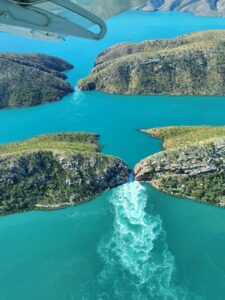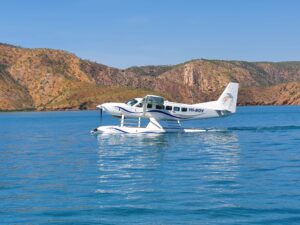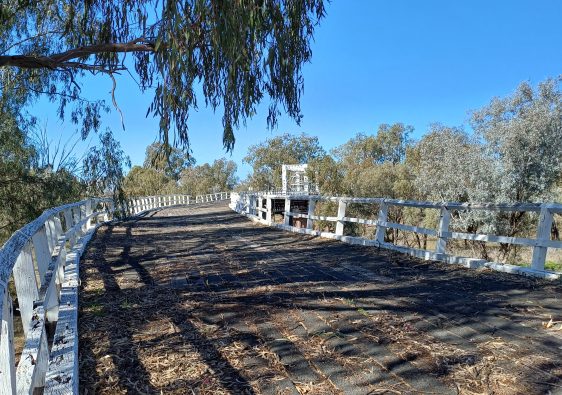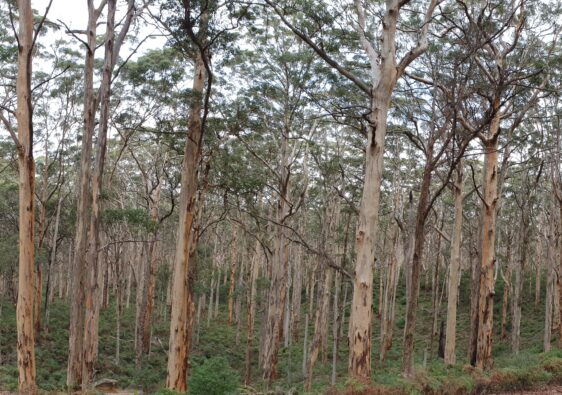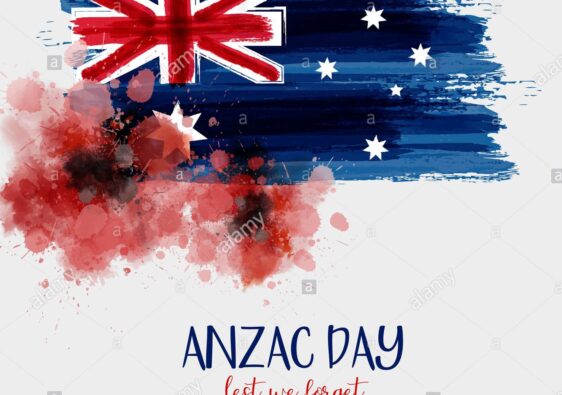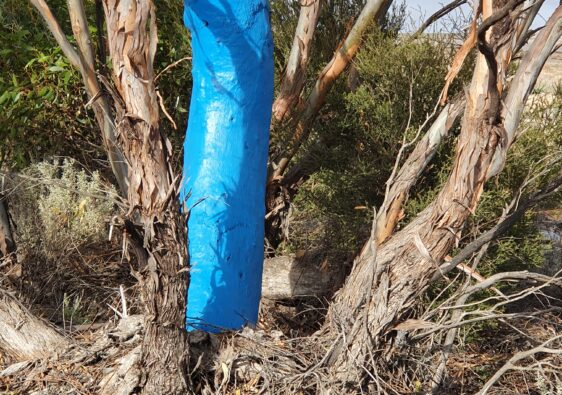July 7th-13th
Day 77-84
18th parallel
Arrived in Broome (Home of the Yawuru people)after a 140klm drive. The pop of Broome is 16k, but in peak season (Jun-Aug) swells to 45k, due mainly to The Grey Nomads, it is also school holidays in WA so extra busy. We were aware of this long before we arrived and knew the towns caravan parks were fully booked, so we opted for a site 30 klm out of town, a lovely spot.
The town is very beautiful, but quite spread out. It is situated with an inlet on the sheltered side, which is mangrove swamps, (crocs) and the ocean facing side, Cable Beach.
Named in honour of the Java-to-Australia undersea telegraph cable which reaches shore there, Cable Beach is situated 7 km from town. The white sand beach have 9mtr tides.
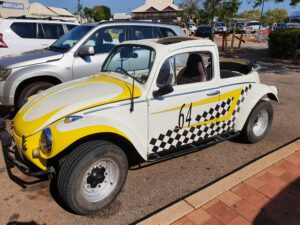
No need for roofs in this town, temps in the 30’s during winter, summer different story cyclones and 100% humidity.
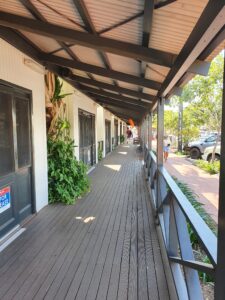
Beginning life as a pearling town in the 1880s, Broome was a wild frontier, attracting workers from Indonesia, Malaysia, China, Japan and Europe. Along with strong Indigenous cultures, these influences are all here today, giving Broome a multi-cultural feel. Red dirt sits beside turqouise ocean, and lots of young backpackers enjoying the relaxed lifestyle.
Beautiful Cable Beach
Strong currents, submerged objects, crocodiles, poisonous jelly fish….what about sharks?…No the crocs eat them all….apart from that all safe to swim??
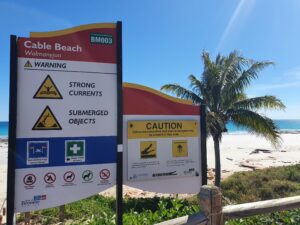
The town has two main areas, Chinatown and Cable Beach home to the resorts and restaurants.
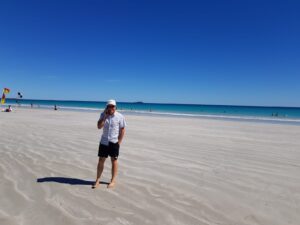
Talking to Liam back in Melbourne, if only he could see where I was calling from.
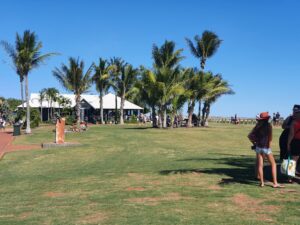
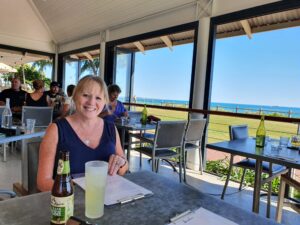
No closed windows here.
Broome 1700klm from Perth is also the gateway to further adventure in the Kimberley region, with tours and cruises departing from Broome.
The beach is separated by a small area of rocks, on one side is the family sunbathing beach and the other is for cars or car bathing beach, hundreds of them.
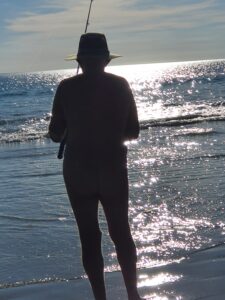
Noticed Malcom fishing in his ‘birthday suit’ I approach him and mention I feel a bit over dressed, he informs me he has been coming here for 30 years as it is a nudist beach, that would explain things, but he is unhappy the way the cars have taken over the beach instead of nudists. They come, take their chairs out, drink too much and leave without a swim.
I said could I take a tasteful photo of him silhouetted against the sun, “No worries, everyone else does.”
Maintaining good eye to eye contact, he said he catches Whiting and Spanish Mackerel, yes he does have an all over tan, …….and is circumcised.
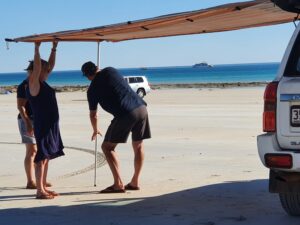
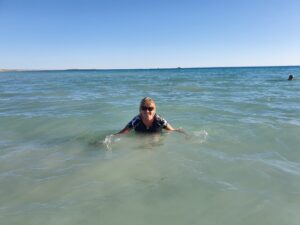

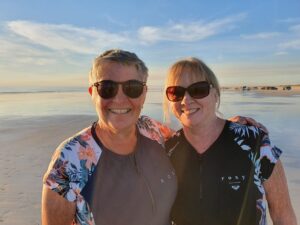
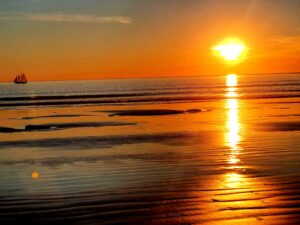
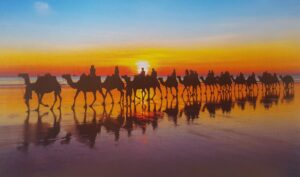 Camels were introduced from Afghanistan in the 1850’s to help with exploring the Australian centre as they believed there was an inland sea. Also the construction of major projects, rail road etc. until motorised transport. They were abandoned and left wandering in the desert. Today we have hundreds of thousands wild in the interior.Today Australia exports them to the Middle East.
Camels were introduced from Afghanistan in the 1850’s to help with exploring the Australian centre as they believed there was an inland sea. Also the construction of major projects, rail road etc. until motorised transport. They were abandoned and left wandering in the desert. Today we have hundreds of thousands wild in the interior.Today Australia exports them to the Middle East.
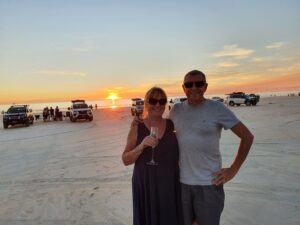
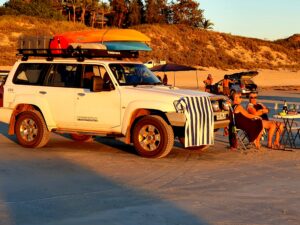
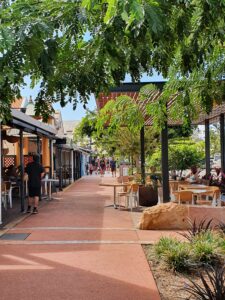
Derby is a town in the Kimberley region of Western Australia, with a pop 4000 with 50% of Aboriginal and Torres Strait Islander descent.
It is located on the edge of the King Sound. It’s not that far from Broome, only about 220 km to the north-east, but it’s very different…Derby’s claim to fame is having the highest tides of any Australian port. 11 m (or 36 feet) of tidal difference means there is an enormous amount of water rushing in and out every 6 hours. Add to that the silty outflow of the Fitzroy River: It means muddy waters!
Mudflats, mangrove swamps… so, Derby is not your typical tropical holiday destination.
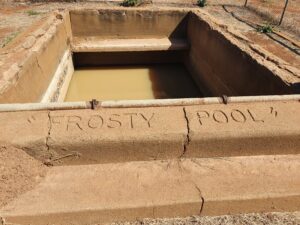
In 1944 Corporal Frost came up with the idea of building a swimming pool. Jack O’Mara and Bill Fitzgerald helped to build the pool. Material was scarce in wartime, but would have cooled down the officers one part of the day and other ranks during the remainder, water supplied from a local bore
The Boab Prison Tree estimated at 1500 years old. They wanted divers for the pearling industry so Aboriginal people were rounded up, put in chains and marched them to the coast. Along with other indigenous people would have temporarily been detained here. Hence The Prison Tree. (2mtr x 1 mtr Hollow to house prisoners)
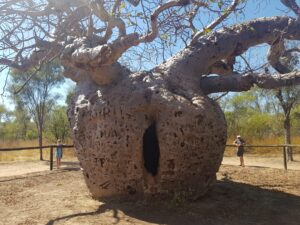
The long trough for cattle droving can accommodate 1000 cattle
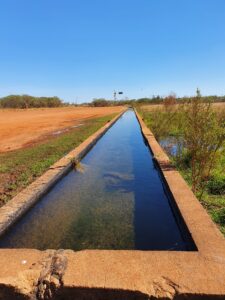
The Derby region was first explored in 1688 by Capt Read / but written about by William Dampier who accompanied him aboard the Cygnet.
It was in A New Voyage Round the World that Dampier made his observations about the Aborigines of Western Australia and the poor quality of Western Australia. These observations ensured that no one in Britain took any great interest in Australia for the next century.
Within Buccaneer Archipelago, a group of 800 to 1000 of some of the most remote islands in the world. This is also where the Horizontal Waterfalls are located, a phenomenon created by the huge tides rushing through narrow gaps between islands. No roads in to this part of the world, fly in on a sea plane or by boat.
Aboriginal people have lived in the archipelago for thousands of years and their rock art can be found on many islands. They used rafts of mangrove logs to travel between islands.
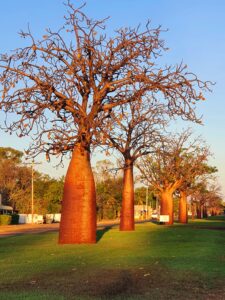
Boab trees in the main street of Derby. They are a deciduous tree with large nuts the size of coconuts, which local indigenous community engrave the art onto below, also local artists at work. Related to the African & Madagascar Baoboa Tree when the continents were joined 180 million years ago.
Mulloway is a popular fish caught from the wharf, also the sunsets, phew!
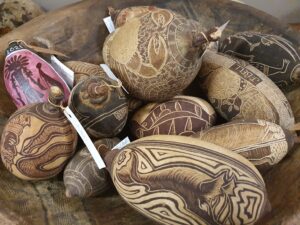
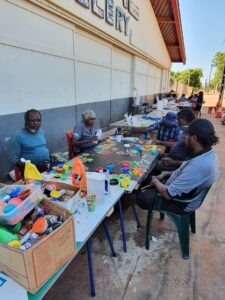
Derby pier at sunset, cattle exported and also iron ore mined at Cockatoo & Koolan islands. They yield an average purity of 69% over the life of the mine, but they have had quantities of 97%, that’s amazing yields.

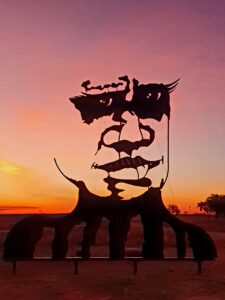
We have booked into a visit to Horizontal Falls. You can fly from Broome & Derby. A 30min flight from Derby and an hour from Broome aboard a Cessna 208 Seaplane.
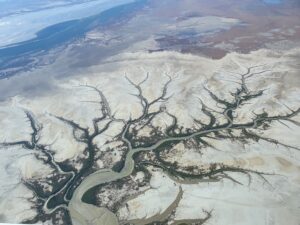
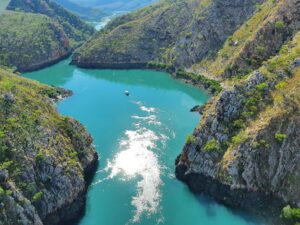
You have two options of a 1 day adventure approx 7 hrs or an overnight stay on one of the pontoons. All are fully catered for with refreshments throughout the visit. What a spectacular experience. You can swim beside the local Tawny Nurse Shark, who have been enticed to the cage with some Barramundi fillets.
Above are the tidal flats draining as the 11 mtr tide retreats, top corner is the Fitzroy River. When I see mudflats & mangroves I think of crocs sliding into the water.
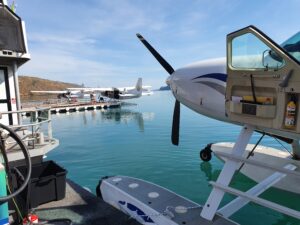
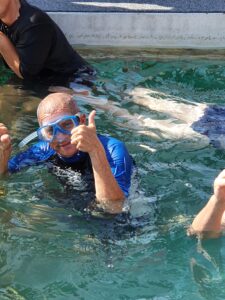

In the turquoise water of Talbot Bay, the fast moving tidal current squeezes through two narrow gorges of the McLarty Range, pushing the water into two narrow gaps, one is 20mtr wide and the narrow one is 7.5 mtr wide. The depth of the water through the gaps is 40mtr and at peak tide the rate of flow is 2.8 million litres per second, so Dan (from Shannon in Co Clare, Ireland) our boat master told us as he navigates the gaps with 4 x 300hp motors on the back.
During peak tides the drop from the middle sea to the inner sea through the gap is 3-4 mtrs flowing at 20 klm /hr. In order for Dan to hold the boat steady without being sucked into the gap he needs to be traveling at 40klm/h.
The powerful tides in the Kimberley can reach more than 13 metres and the direction of the flow reverses ensuring the water flows two different ways each day, after a calm of a few minutes the cycle begins again.
Holding her steady at 40 klm/h, by the way the boat is 4 mtr wide so not a lot of room for error. One of the most exhilarating rides you can experience. We passed up & down theses gaps multiple times.
David Attenborough described it as “one of the greatest natural wonders of the world.”
Five seaplanes ferry the customers from Derby & Broome, between 250-350 per day everyday. The crewe work 13 days straight with 3 days off back to base in Broome, as the neap tides occur twice monthly. The season runs for 9 months, with 3 months off due to the cyclone season.
You may prefer some Youtube footage for further images.

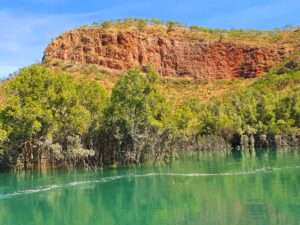
Back to the pontoon for lunch, Barramundi of course, then back out for another ride to the inner stretches of the archipelago where the crocs reside in the mangroves, then back for another ride up and down the falls.
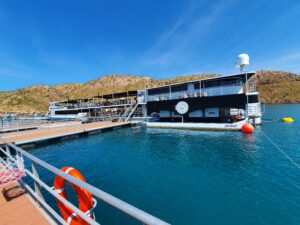
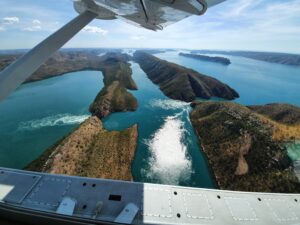
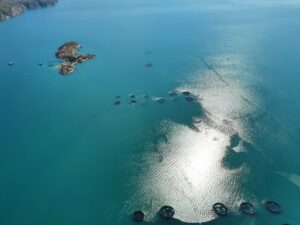
Back to base overlooking the falls and flyover a Barramundi farm in the Olympic size rings below.
